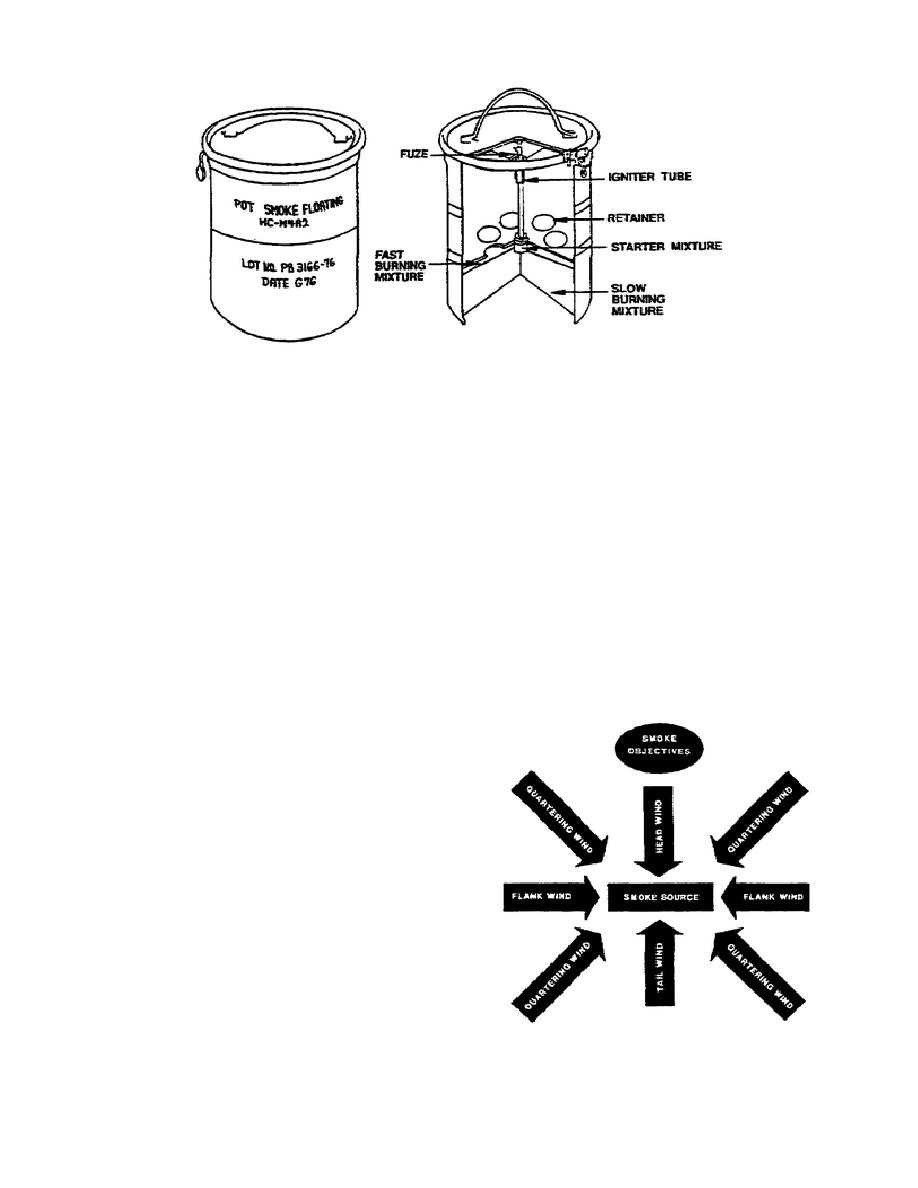
Figure 5. M4A2 HC floating smoke pot.
M207A1 floating smoke pot fuze only.
than 1 kilometer per hour and is torn apart by winds faster
than 25 kilometers per hour.
Part C-Determine Weather and
Terrain Conditions
Weather Conditions
A smoke screen must be continuous to be effective.
Weather conditions that affect smoke formation
The success of a smoke screen depends greatly on the
include temperature gradient, humidity, precipitation, and
interpretation of meteorological data and the observation
cloud cover.
of the screen in relation to the terrain while the smoke
The three types of temperature gradients that affect
operations are being conducted. These factors are
smoke screens are inversion, neutral, and lapse. An
discussed below.
estimate of temperature gradient is used to predict the
stability of the air. Temperature gradients are measured
by subtracting the air temperature 0.5 meters above the
Wind
There are many different types of wind that affect
ground surface from the air temperature 4.0 meters above
deliberate smoke operations. Prevailing winds have the
the surface. With logistical limitations, smoke can be
greatest influence.
produced under any temperature gradient.
Prevailing winds blow between 9 and 800 meters
Inversion. An inversion (stable) condition exists
above the ground and tend to move smoke screens in one
when the air temperature increases with an increase in
direction. To determine the direction and speed of
altitude. This condition creates stable air current and
prevailing winds, estimates are made at 16 meters above
the ground.
Smoke generators and other smoke sources must be
employed and positioned based on the wind direction
(Figure 6). Consider the location of enemy forces before
selecting or emplacing a smoke source. Place smoke pots
or generators with a tail wind in reference to the selected
area.
Winds in excess of 26 kilometers per hour carry
smoke rapidly from its source, but tend to break up the
smoke screen. Therefore, more smoke munitions are
required to produce the desired results. Wind speeds
below 14 kilometers per hour change directions often.
This causes smoke streamers to merge at a comparatively
short distance from the source. Therefore, the smoke
source must be moved closer to the objective to get
effective coverage. Wind speeds ranging from 1 to 14
kilometers per hour are best for the production of smoke
screens. HC smoke tends to rise when the wind is less
Figure 6. Classifying wind directions.
7



 Previous Page
Previous Page
